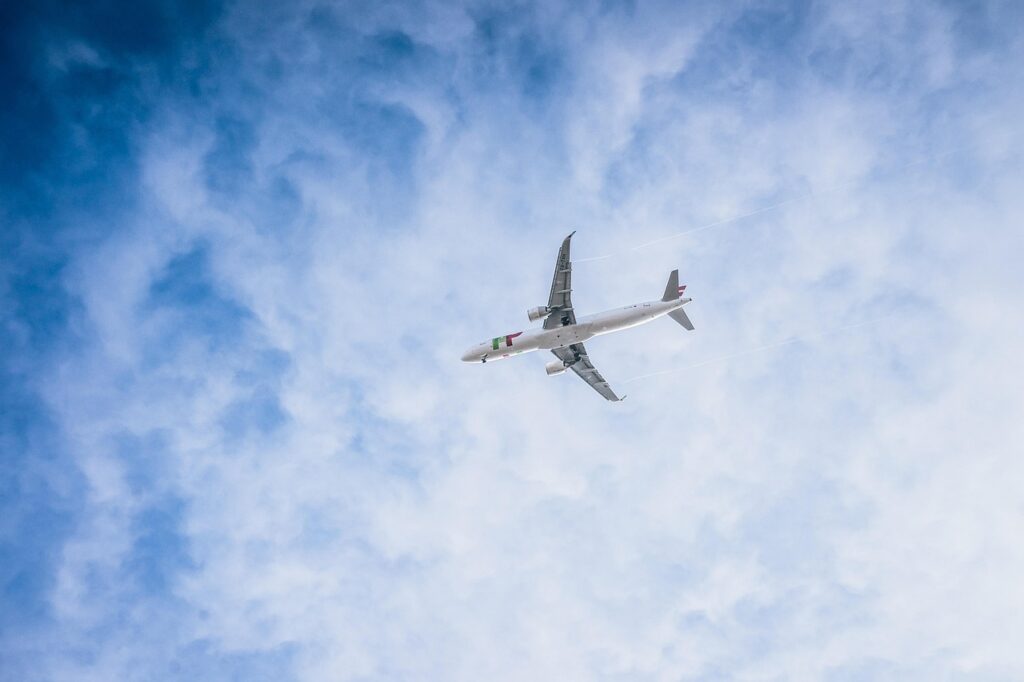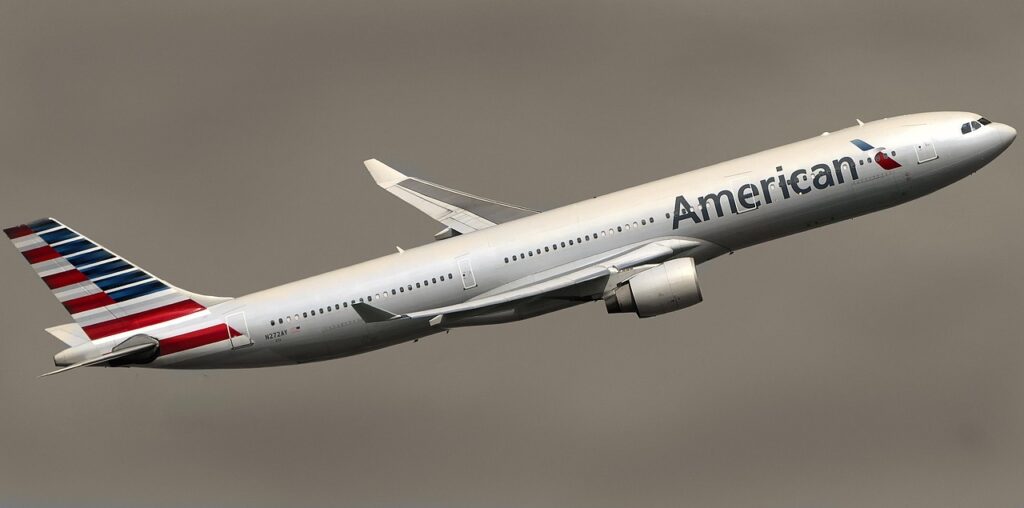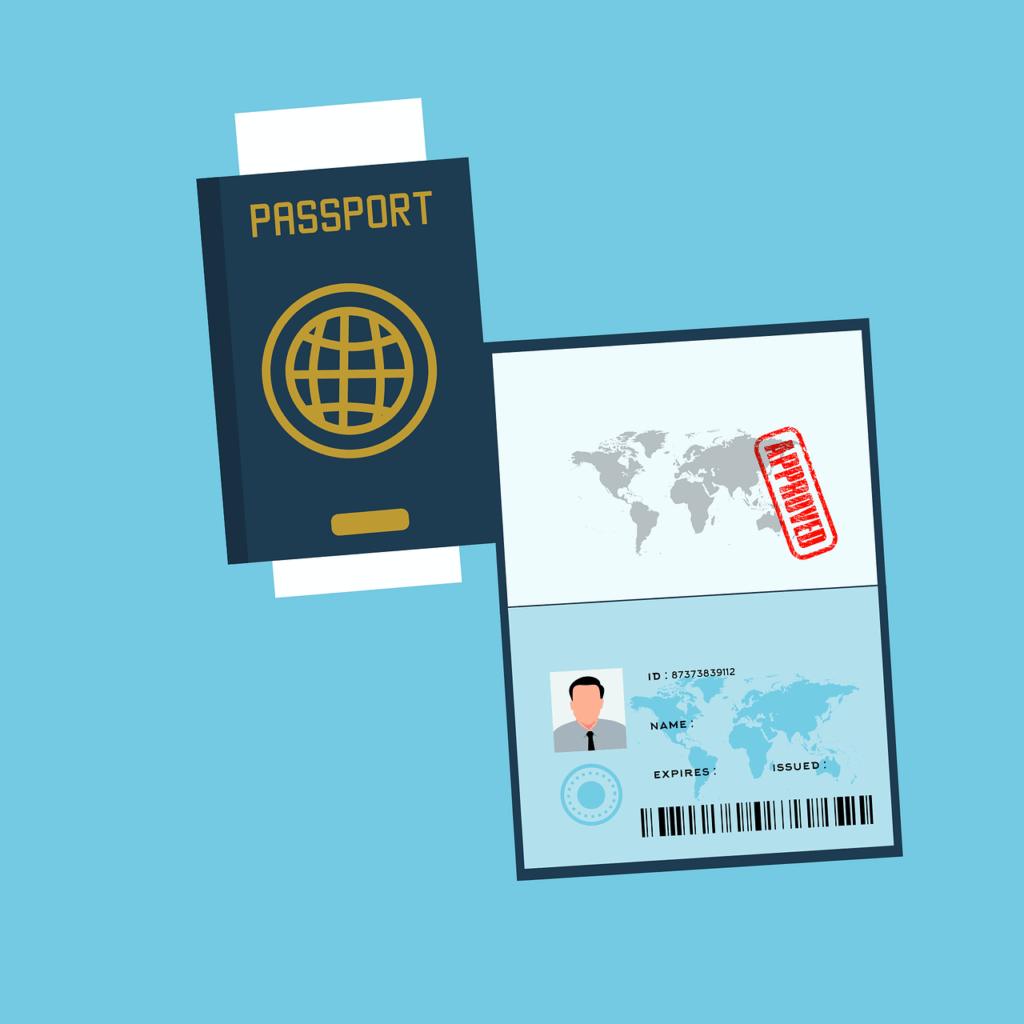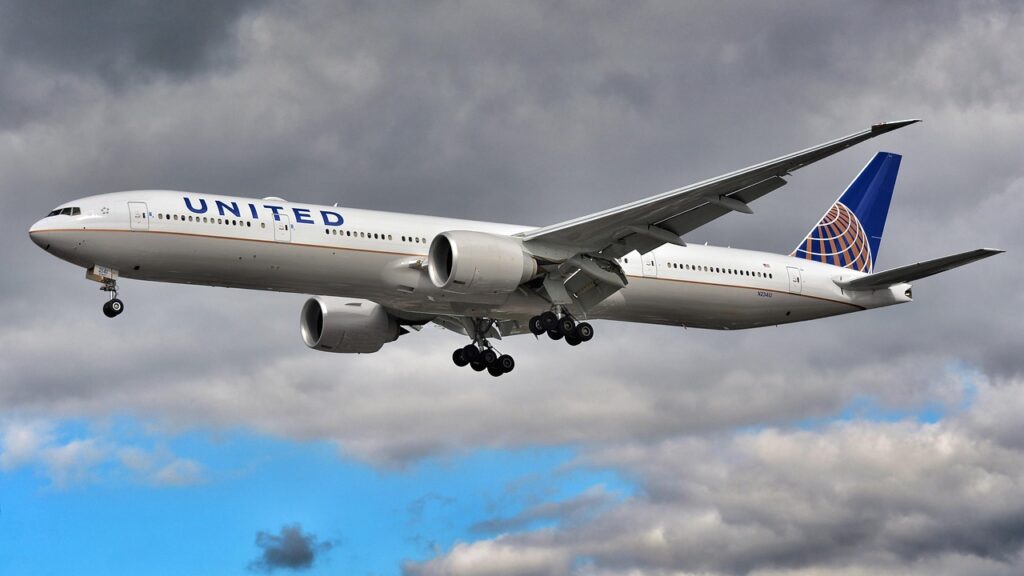
For many travelers, emotional support animals (ESAs) are more than just companions; they are an essential part of managing mental health conditions like anxiety or PTSD, offering comfort and companionship, especially during the often-stressful experience of air travel. In the past, the process of flying with an ESA was relatively straightforward, with airlines often treating them similarly to service animals, allowing them to accompany their owners in the cabin without additional fees. However, the landscape of air travel for ESAs has undergone significant changes in recent years, demanding a thorough understanding of the updated rules and airline policies.
Recent regulatory shifts have dramatically altered what airlines are required to allow when it comes to bringing your emotional support animal onboard. These changes, primarily driven by revisions from the U.S. Department of Transportation (DOT), mean that the protections once afforded to ESAs no longer universally apply, leading to stricter policies and increased requirements across the board. This can be a source of confusion and frustration for ESA owners who rely on their animals for support, making informed preparation more critical than ever before.
This in-depth guide is designed to empower you with the most current and actionable information regarding flying with emotional support animals, helping you navigate the complexities of airline policies and documentation requirements. We’ll break down the key rule changes, explore how major airlines are adapting, and provide practical advice to ensure your journey with your beloved ESA is as smooth and stress-free as possible. Understanding these new realities is the first step toward responsible and confident travel, ensuring you can continue to enjoy the benefits of your ESA’s presence.
1. **What Is an Emotional Support Animal (ESA)?**
An emotional support animal, or ESA, is typically a dog or cat, though it can be any domesticated animal, that has been prescribed by a licensed mental health professional. The primary purpose of an ESA is to help alleviate symptoms of emotional or psychological conditions, such as anxiety, depression, or PTSD, providing comfort and companionship through their presence and affection. These animals play a crucial role in helping individuals deal with mental health issues by reducing symptoms associated with these illnesses.
Unlike service animals, a key distinction of ESAs is that they are not individually trained to perform specific tasks directly related to a disability. While they offer invaluable emotional comfort, their role is not task-oriented. This fundamental difference is critical in understanding why airlines no longer offer the same legal protections for ESAs as they do for trained service animals, particularly after the recent regulatory updates. They provide comfort through their presence, companionship, and affection.
Historically, the distinction was less pronounced in air travel, but the revised regulations have drawn a clear line. Knowing this key difference – that ESAs offer emotional comfort while service animals perform tasks directly related to a disability – is paramount for any traveler planning to fly. It impacts everything from required documentation to cabin access and associated fees.

2. **The DOT’s Pivotal Rule Changes for ESAs**
The landscape for emotional support animals in air travel underwent a significant transformation in 2021 when the U.S. Department of Transportation (DOT) revised its regulations. These updated rules profoundly changed how airlines are required to treat ESAs, moving away from the previous standard where ESAs were often considered service animals under the Air Carrier Access Act (ACAA). This shift means that ESAs are no longer protected under the ACAA for air travel, fundamentally altering their status on flights.
The revised regulations explicitly state that airlines are no longer required to treat ESAs as service animals. This key change grants airlines the discretion to treat ESAs as standard pets, which comes with a host of implications for owners. While trained service animals (specifically dogs only) must still be accommodated by airlines, the same mandate no longer applies to emotional support animals. This has led to a noticeable tightening of policies across the aviation industry.
In practical terms, the bottom line is that airlines can now legally refuse to allow ESAs in the cabin without adhering to pet policies. This often means that ESAs are subject to associated fees and restrictions that apply to any other pet traveling in the cabin or cargo hold. This shift increases travel costs for ESA owners and can significantly impact those who rely on their ESAs for comfort during travel, especially if they cannot afford the additional fees.

3. **How Airlines Now Treat Emotional Support Animals (ESAs)**
Following the significant DOT rule changes, most airlines in the U.S. have adjusted their policies to treat emotional support animals as conventional pets. This universal adoption of pet policies for ESAs has considerable ramifications for owners, introducing a new set of requirements and potential costs that were not previously mandatory. Each airline has developed its specific set of rules, making it crucial for ESA owners to research and understand these individual policies before booking their flights.
These updated policies typically include several common elements. Airlines now routinely charge additional fees for pets, which directly impacts ESA owners who previously enjoyed free cabin access. Furthermore, there’s an increased emphasis on documentation, such as up-to-date pet vaccinations and health certificates, which may be required for travel. Many airlines also mandate that emotional support dogs or animals travel in carriers that are small enough to fit comfortably under the cabin seat, imposing size and weight restrictions that can limit options for larger ESAs, potentially requiring them to travel in the cargo hold.
The implications extend beyond just fees and carriers. Stricter airline policies may also limit the options for owners with certain types of ESAs, as some airlines might have breed or species restrictions. This means that if a particular type of ESA isn’t allowed by an airline, the owner will have fewer choices for travel. The overall impact of these changes is that travel planning has become more complex and potentially more expensive for those who wish to fly with their emotional support animals.

4. **Understanding Airline-Specific ESA Policies: American Airlines**
When planning to fly with your emotional support animal on American Airlines, it’s crucial to be aware of their updated ESA policy. American Airlines, in line with the DOT rule changes, now treats ESAs as pets, meaning they are subject to additional fees and specific travel requirements. Your emotional support animal can travel either as a carry-on in the cabin or via American Airlines Cargo, with the choice often depending on the animal’s size and breed.
For carry-on travel, only cats and dogs that are at least eight weeks old are permitted. The airline imposes a combined weight limit of 20 pounds for the animal and its carrier, and the carrier must be small enough to fit comfortably under the seat in front of you. This means ensuring your ESA is eligible for cabin travel requires careful consideration of its size and the carrier dimensions. American Airlines also has breed-specific restrictions, particularly excluding brachycephalic (snub-nosed) breeds from checked pet travel due to potential respiratory risks.
It’s important to note the specific fee structure for American Airlines: $150 per carry-on kennel for travel within the U.S., Mexico, Canada, Central America, and the Caribbean. For pets traveling as checked baggage, the fee increases to $200 per kennel. Additionally, the airline restricts pets as checked baggage if temperatures exceed 85°F (29.4°C) or drop below 45°F (7.2°C) to ensure animal safety. To ensure a smooth process, it is recommended to inform the airline at least 48 hours in advance if you are traveling with a pet, as cabin space for pets is limited.
5. **Understanding Airline-Specific ESA Policies: Delta Air Lines**
Delta Airlines has also adapted its policies for emotional support animals, treating them as pets in accordance with the latest DOT regulations. Despite these changes, Delta aims to make traveling with your ESA as straightforward as possible, provided you understand their specific pet travel guidelines. Delta allows cats, small dogs, and even household birds to travel in the cabin, given they meet specific criteria. The pet must fit comfortably in an approved pet carrier that can be stowed under the seat in front of you for the entire duration of the flight.
Delta operates on a first-come, first-served policy for pets in the cabin due to limited capacity per flight. Therefore, it is strongly recommended to book your pet’s travel reservation well in advance, ideally between 3 to 14 days before your departure. If your emotional support animal is too large to fit in the cabin under these restrictions, Delta offers the option for it to be shipped via Delta Cargo, though this comes with its own set of rules and costs. Age restrictions also apply: pets must be at least eight weeks old for domestic flights and 16 weeks or older for international flights (or 6 months for certain other animals).
Fees for traveling with a pet on Delta Airlines vary based on the destination. For flights between the USA, Puerto Rico, Canada, and the Virgin Islands, the fee is $95. Travelers flying to and from Brazil benefit from a discounted fee of $75, while international travel to other countries incurs a $200 fee. Owners should be aware of common challenges, such as the airline’s restriction on pet travel in extreme weather conditions for safety, especially for cargo. Certain dog and cat breeds, including brachycephalic animals, are also restricted for safety reasons. For international flights, owners will need documentation such as vaccinations and health certifications, depending on the destination’s regulations.
6. **Understanding Airline-Specific ESA Policies: United Airlines**
For those planning to fly with their emotional support animal on United Airlines, a clear understanding of United’s pet travel policy is essential for a smoother journey. Similar to other major carriers, United now categorizes ESAs as pets, meaning they must adhere to standard pet travel regulations. Your pet is required to remain in a carrier throughout the flight, and this carrier must be able to fit securely under the seat in front of you. United accepts both hard-sided and soft-sided carriers, each with specific dimension requirements to ensure compliance and passenger comfort.
For hard-sided carriers, the maximum allowed dimensions are 9 inches in height, 17.5 inches in length, and 12 inches in width. Soft-sided carriers offer slightly more flexibility, with maximum dimensions of 11 inches in height, 18 inches in length, and 11 inches in width. It’s important to select a carrier that not only meets these specifications but also allows your ESA to stand up and turn around comfortably. United Airlines may also implement restrictions on certain breeds or sizes for health and safety reasons, so it’s wise to check for any specific prohibitions.
United Airlines charges a fee of $150 each way for pets traveling in the cabin. Importantly, United generally does not offer cargo travel for emotional support animals or pets, with exceptions only for specific military or foreign service circumstances. To ensure a smooth experience, owners should verify that their pet’s documentation, including health certificates and vaccination records, is current. Additionally, training your emotional support dog or animal to be well-behaved and capable of handling public settings will contribute significantly to a hassle-free journey. Always check if your destination country accepts emotional support dogs and reserve a spot for your pet in advance due to limited availability.

7. **Documentation Requirements for ESA Travel**
Even though emotional support animals are no longer granted legal access under the Department of Transportation (DOT) rules as service animals, certain documentation remains crucial for air travel. Airlines, or the specific international routes you plan to take, may still request a variety of paperwork to ensure your animal meets their pet travel requirements. Being prepared with the correct documents can prevent last-minute complications and ensure a smoother journey for both you and your ESA.
One common request, despite ESAs not having the same legal standing as before, might be a recent ESA letter from a licensed mental health professional. While this letter is no longer sufficient to guarantee free cabin access, some airlines might still ask for it as part of their pet policies, especially when assessing the nature of the animal’s role. More universally required, however, are proofs of vaccinations and comprehensive health certificates, which demonstrate that your ESA is healthy and poses no public health risk, particularly for international travel.
Furthermore, you will likely need to complete specific pet travel forms, whether for domestic or international journeys, which detail your animal’s information and travel plans. An approved pet carrier that meets the airline’s size requirements and fits under the seat is also a non-negotiable item, often needing to be presented for inspection. It’s a vital tip to remember that even with an ESA letter, you will still need to follow the airline’s standard pet policies, including paying any associated fees. Gathering all these documents in advance and keeping them readily accessible throughout your travel is a proactive step toward a stress-free experience.
Navigating air travel with a support animal has indeed become more complex, especially with the clear distinctions now drawn between emotional support animals and psychiatric service dogs. While ESAs face new restrictions, understanding the landscape for Psychiatric Service Dogs (PSDs) opens up different avenues for those with qualifying conditions. This section dives into the specifics of PSDs, clarifying their protections, detailing airline requirements, comparing their travel rights with ESAs, and offering actionable advice to ensure a smooth journey for all types of support animals.
Read more about: $50,000 Mistake: 14 Essential Rules to Master When Buying a Car Out of State
8. **Psychiatric Service Dogs (PSDs): A Clearer Path to Travel**
Unlike emotional support animals, which primarily offer comfort through their presence, Psychiatric Service Dogs (PSDs) are specifically trained to perform tasks that mitigate a handler’s psychiatric disability. These dogs are considered service animals and hold different legal standing under U.S. Department of Transportation (DOT) rules. This distinction is crucial for travelers, as it significantly impacts airline accommodation and overall travel rights.
To qualify as a PSD, a dog must be individually trained to perform specific tasks directly related to a person’s psychiatric disability. This could involve tasks like interrupting self-harm behaviors, alerting to panic attacks, or providing grounding support during dissociative episodes. Furthermore, a PSD must be well-behaved and under the handler’s control in public spaces, demonstrating appropriate conduct in various environments.
Individuals seeking to qualify for a PSD must have a diagnosed psychiatric disability by a licensed mental health professional (LMHP). Mental conditions such as PTSD, anxiety disorders, depression, bipolar disorder, OCD, panic disorders, and ADHD can qualify. The key is that the disability must be long-term and significantly interfere with daily life, and the PSD’s trained tasks must directly alleviate symptoms of this condition.

9. **Legal Protections and Airline Accommodation for PSDs**
Psychiatric Service Dogs (PSDs) enjoy robust legal protections, setting them apart from ESAs. Under the Air Carrier Access Act (ACAA), PSDs are recognized as service animals and are legally allowed to travel in the aircraft cabin with their handler free of charge. This means airlines cannot impose pet fees or require PSDs to travel in cargo, provided they meet specific criteria and documentation requirements.
Beyond air travel, PSDs are also protected under the Americans with Disabilities Act (ADA), which grants them public access rights. This ensures they can accompany their handlers in public places where pets are typically not allowed. Furthermore, the Fair Housing Act (FHA) protects PSDs from housing discrimination, providing handlers with reasonable accommodations in residential settings.
Most major U.S. airlines, including American Airlines, Delta Airlines, United Airlines, Southwest Airlines, Alaska Airlines, and Spirit Airlines, accommodate PSDs free of charge. However, handlers must submit a Service Animal Transportation Form, typically at least 48 hours before the flight. Airlines may deny transport if a PSD exhibits disruptive behavior or is too heavy or large to travel safely in the cabin without encroaching on others’ space.

10. **Essential Documentation for PSD Travel**
Even with the protected status of Psychiatric Service Dogs (PSDs), proper documentation is a non-negotiable step for a seamless travel experience. Almost all U.S. airlines require handlers to submit the U.S. DOT Service Animal Transportation Form. This form serves as official proof that your companion is a trained psychiatric service dog, confirming their status and eligibility for cabin travel.
The DOT form is comprehensive, requiring detailed information about both the owner and the animal. A critical section mandates verification that your PSD is specifically trained to assist with a psychiatric disability. This includes outlining the specific tasks the dog performs to mitigate your condition, underscoring its functional role beyond mere companionship.
In addition to the DOT form, travelers with a PSD should always have up-to-date vaccination records and a health certificate readily available. These documents demonstrate that your dog is healthy and current on all necessary immunizations, preventing any potential health-related travel complications. While an ESA letter is generally not sufficient for PSD status, a legitimate PSD letter from a licensed mental health professional confirming your qualifying disability can further support your documentation.
11. **ESA vs. PSD: Understanding Your Travel Rights**
The distinction between Emotional Support Animals (ESAs) and Psychiatric Service Dogs (PSDs) is paramount for anyone planning air travel. With the DOT’s rule changes, ESAs are now largely treated as pets by most airlines, meaning their travel rights are significantly curtailed compared to PSDs. This shift has considerable implications for fees, cabin access, and the overall travel experience.
For ESAs, the “no special rights” rule now largely applies. Airlines are no longer legally obligated to allow ESAs free cabin access, and most now charge additional pet fees, ranging from $95 to $200 per way. Furthermore, ESAs must comply with individual airline pet policies, which often include size, weight, and carrier restrictions, and some airlines may even deny travel to certain species or breeds.
In stark contrast, PSDs retain strong legal protections under the ACAA. They are considered service animals and are entitled to travel in the cabin with their handler free of charge, provided they meet behavioral and documentation requirements, primarily the U.S. DOT Service Animal Transportation Form. Airlines cannot deny travel to a PSD unless it poses a direct threat to the health or safety of others, exhibits disruptive behavior, or is too large to fit in the cabin without obstructing aisles.

12. **More Airline-Specific Pet Policies for ESAs (and Other Pets)**
While American, Delta, and United Airlines’ policies for ESAs were detailed in Section 1, it’s essential to grasp the broader landscape of how other major carriers approach pet travel, as this directly impacts ESA owners. Remember, most airlines now treat ESAs as conventional pets, requiring fees and adherence to specific guidelines.
Southwest Airlines, for example, allows only cats and dogs in the cabin for a fee of $125 per pet carrier for domestic flights. They do not permit pets on international flights or flights to Hawaii. Pets must be at least 8 weeks old and vaccinated, traveling in a carrier that meets their specific dimensions: 18.5″ L x 13.5″ W x 9.5″ H. It’s a “first-come, first-served” system, so early reservation is key.
Alaska Airlines accommodates house cats, small dogs, domesticated rabbits, and household birds in the cabin. International flights are restricted to cats and dogs aged eight weeks or older. The in-cabin fee is $100 USD one-way, while baggage and cargo travel costs $150 USD. Their maximum carrier dimensions are 17″ L x 11″ W x 7.5″ H, and reservations are highly recommended due to limited space.
Spirit Airlines also welcomes small dogs, domestic cats, rabbits, and household birds in the cabin, charging $125 per carrier each way. They do not offer cargo services for pets, and like others, they have limited capacity, making advance booking crucial. Frontier Airlines permits domesticated dogs, cats, hamsters, small birds, or guinea pigs on domestic flights, but only dogs and cats for international travel to Mexico and the Dominican Republic. Their fee is $99 per animal in the cabin, with a maximum container size of 18″ L x 14″ W x 8″ H, and they do not allow pets as checked baggage. JetBlue Airways charges $125 per flight and does not allow ESAs as service animals.

13. **Decoding Airline Carrier Requirements for ESAs and Pets**
One of the most critical aspects of traveling with an emotional support animal or pet is ensuring their carrier meets strict airline requirements. These regulations are in place to guarantee safety, comfort, and compliance with cabin space limitations. Ignoring these specifications can lead to last-minute travel disruptions or even denial of boarding, which no one wants when traveling with a beloved companion.
Most airlines mandate that your pet carrier must be able to fit comfortably and securely under the seat in front of you. While this sounds straightforward, the specific dimensions can vary significantly between carriers. For instance, United Airlines specifies maximum dimensions for hard-sided carriers at 9″ H x 17.5″ L x 12″ W, while soft-sided carriers offer slightly more flexibility at 11″ H x 18″ L x 11″ W.
Delta Air Lines and American Airlines also have similar under-seat requirements, with Delta generally allowing carriers that fit under the seat, and American allowing a combined weight limit of 20 pounds for the animal and its carrier. Southwest Airlines specifies 18.5″ L x 13.5″ W x 9.5″ H, and Alaska Airlines has a maximum of 17″ L x 11″ W x 7.5″ H. It’s imperative that the carrier not only meets these external dimensions but also allows your animal to stand up, turn around, and lie down comfortably.
Always remember that these dimensions apply to both hard-sided and soft-sided carriers, although soft-sided options often provide a bit more give for fitting into tight spaces. Beyond size, ensure the carrier is well-ventilated, secure, and made of durable material. Equipping it with familiar bedding can also help make the journey less stressful for your animal.

14. **Top Tips for a Stress-Free Journey with Your Support Animal**
Preparing for a flight with your emotional support animal or psychiatric service dog goes beyond just paperwork; it involves practical steps to ensure a smooth, comfortable, and stress-free journey for both of you. Thoughtful preparation can make all the difference, transforming potential anxieties into manageable travel experiences.
Start by confirming your chosen airline’s specific pet or PSD policy *before* you book your flight. Policies can change, and what was true yesterday might not be true today. Once confirmed, reserve your animal’s spot early, as cabin space for pets is typically limited per flight on a first-come, first-served basis. This proactive step helps avoid the disappointment of being turned away at the gate due to full capacity.
Crucially, train your animal for calm behavior in public settings. A well-behaved ESA or PSD is less likely to cause disruptions and more likely to be welcomed by airline staff and fellow passengers. Before your trip, take your animal for a long walk or provide ample exercise to help them expend energy, which can contribute to calmer behavior during the flight. During the flight, manage your animal by using familiar commands and bringing small treats to reinforce good behavior and provide comfort.
Finally, keep all necessary documents, whether it’s your ESA letter (if requested), health certificates, vaccination records, or the U.S. DOT Service Animal Transportation Form, readily accessible. A pro tip: print out the airline’s specific policy page and carry it with you. This can be invaluable in case of any staff confusion or differing interpretations of rules, ensuring you have clear guidelines to reference.
Read more about: Mastering the Drive: 14 Essential Strategies to Avoid Road Rage and Ensure a Calmer Journey
15. **How to Qualify for and Obtain a Legitimate PSD Letter**
For individuals who rely on a Psychiatric Service Dog (PSD) for their mental health, obtaining a legitimate PSD letter from a licensed mental health professional (LMHP) is a crucial step for airline travel. This letter verifies your psychiatric disability and the necessity of your PSD, empowering your travels with legal recognition.
Qualifying for a PSD letter begins with having a diagnosed mental or emotional disability that significantly impacts your daily life. Conditions such as PTSD, anxiety disorders, depression, bipolar disorder, and schizophrenia are common. The LMHP will assess your condition to confirm it is long-term and that a PSD would genuinely assist in mitigating the symptoms of your disability through specific tasks.
Obtaining this letter doesn’t have to be a daunting process. Companies like ESA Pet offer a streamlined, 3-step approach. It typically starts with a brief pre-screening questionnaire covering your disability, as well as your dog’s behavior and training. This initial step helps determine preliminary eligibility and gather essential information.
Following the pre-screening, you’ll be connected with a licensed mental health professional. This professional will conduct an assessment to confirm your disability and ascertain if a PSD is medically necessary for your condition. If deemed eligible, the healthcare provider will sign your official PSD letter. Many services pride themselves on efficiency, often delivering your approved letter within 24-48 hours, making the process both accessible and timely.
The landscape of flying with emotional support animals and service animals has certainly evolved, becoming more nuanced with updated regulations. While ESAs now generally travel under standard pet policies, incurring fees and adhering to stricter rules, Psychiatric Service Dogs (PSDs) continue to hold protected status, allowing them to fly free of charge with proper documentation and training. The key to successful travel lies in diligent preparation: understanding the specific policies of your chosen airline, gathering all required documentation, ensuring your animal is well-behaved, and knowing the distinct rights that apply to your companion. By staying informed and proactive, you can navigate these complexities with confidence, ensuring your beloved animal can continue to provide their invaluable support, no matter where your travels take you. Travel smart, travel prepared, and keep those tails wagging!









